Markets plodded higher on Friday as US yields lifted a little while DXY kept falling:
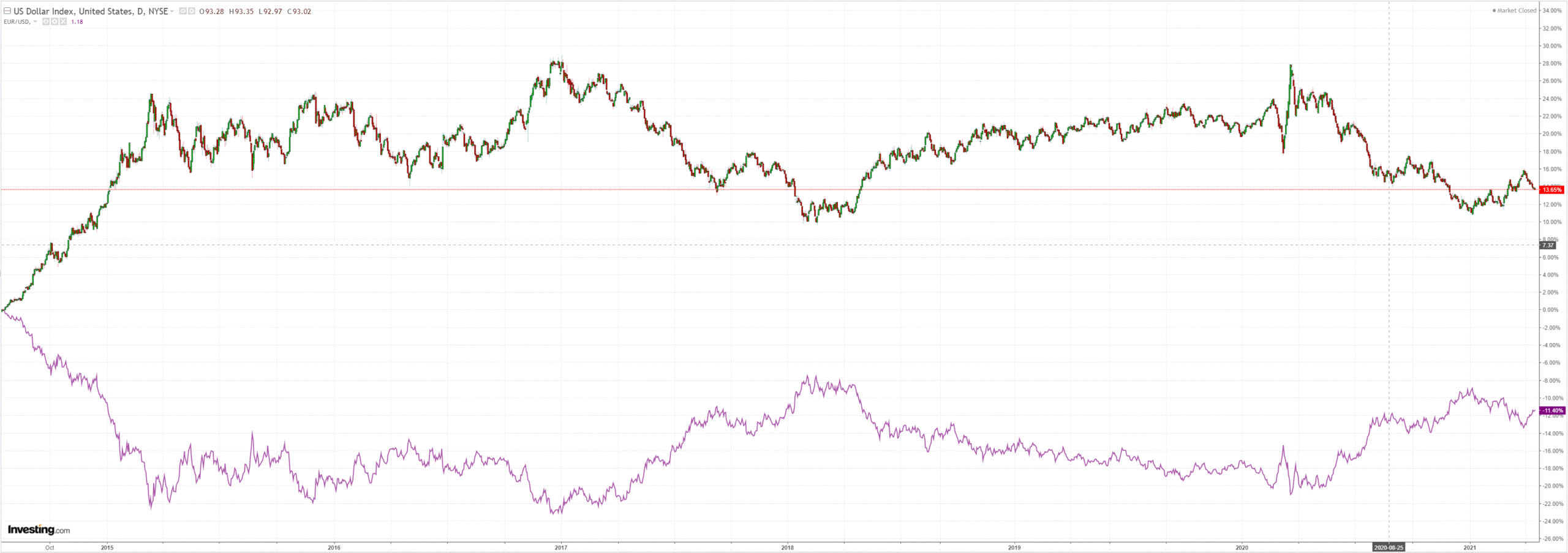
The Australian dollar is forming up an even larger head-and-shoulders topping pattern while trending lower against EUR and JPY:
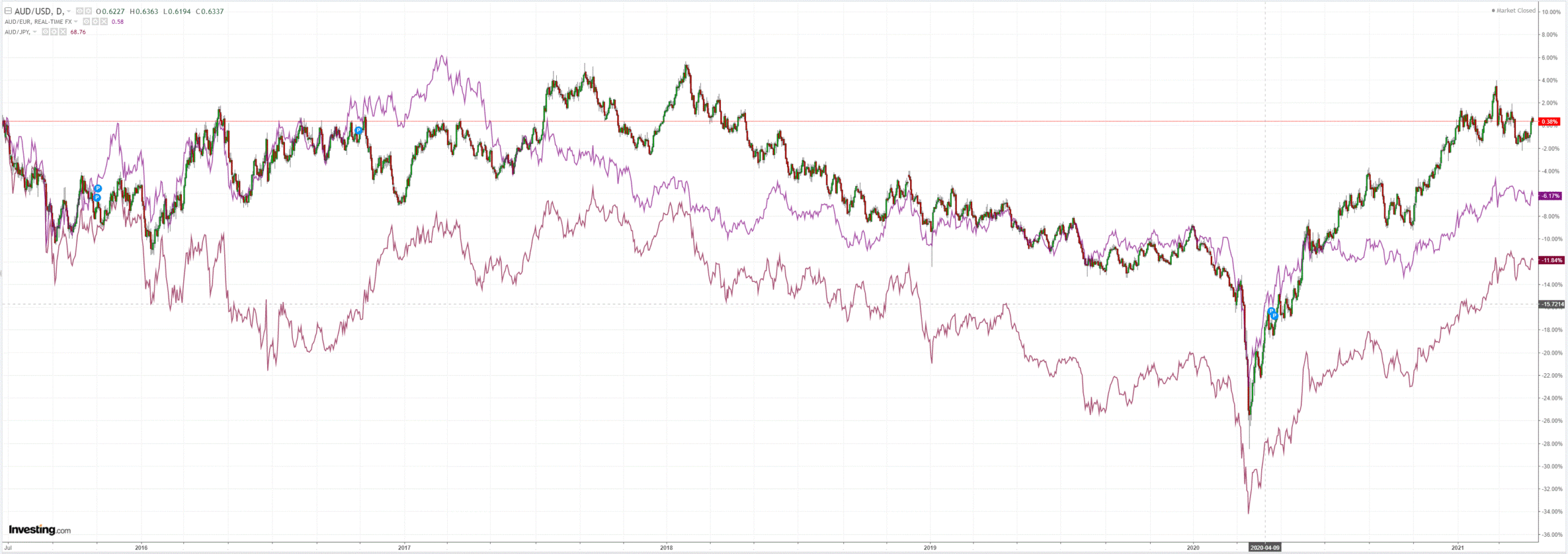
Gold took off along with oil:
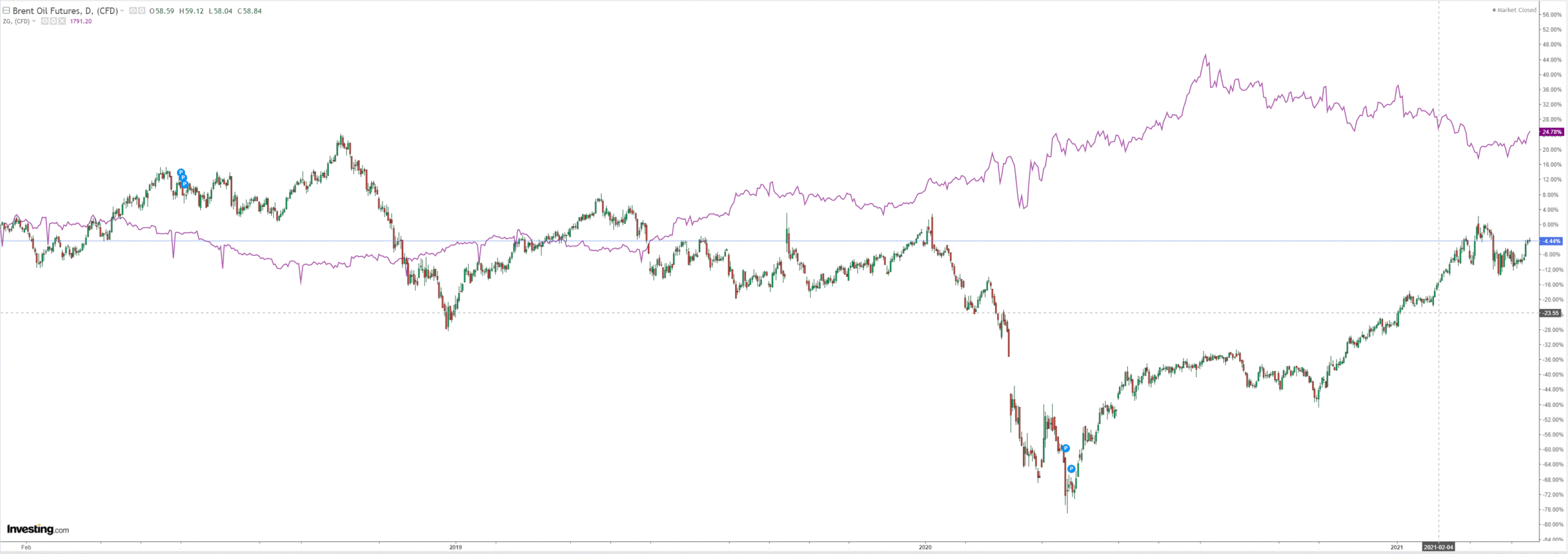
Base metals fell:
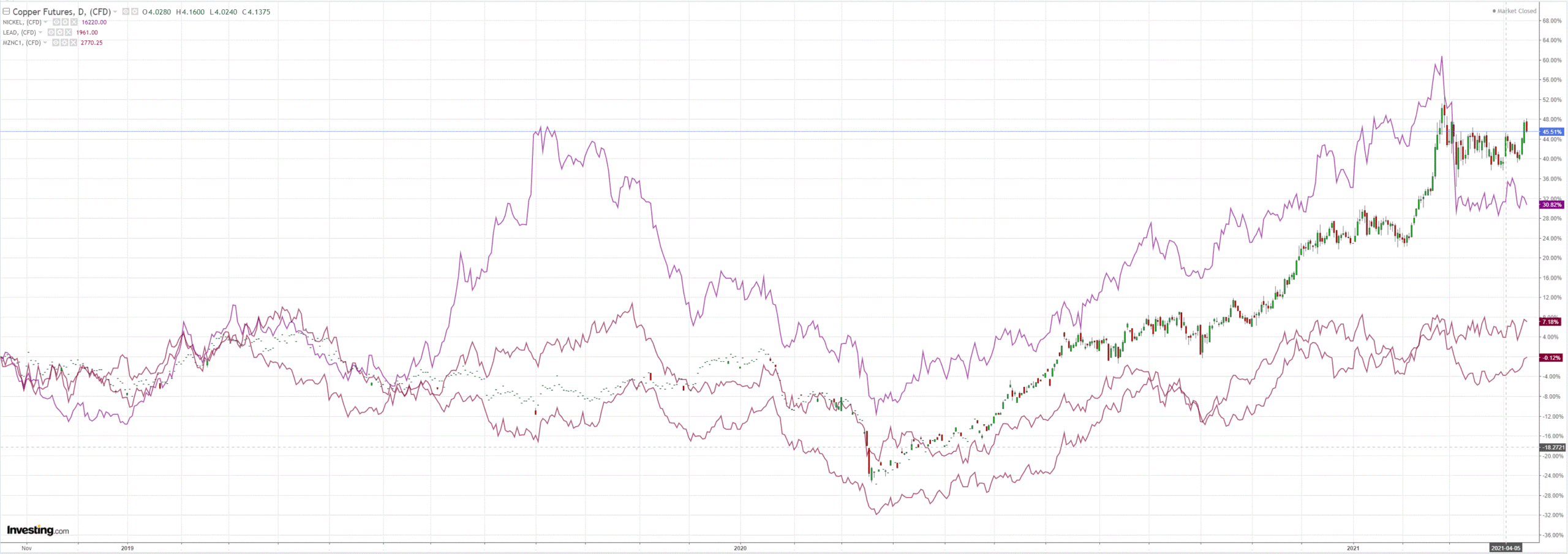
Big miners mostly lifted:
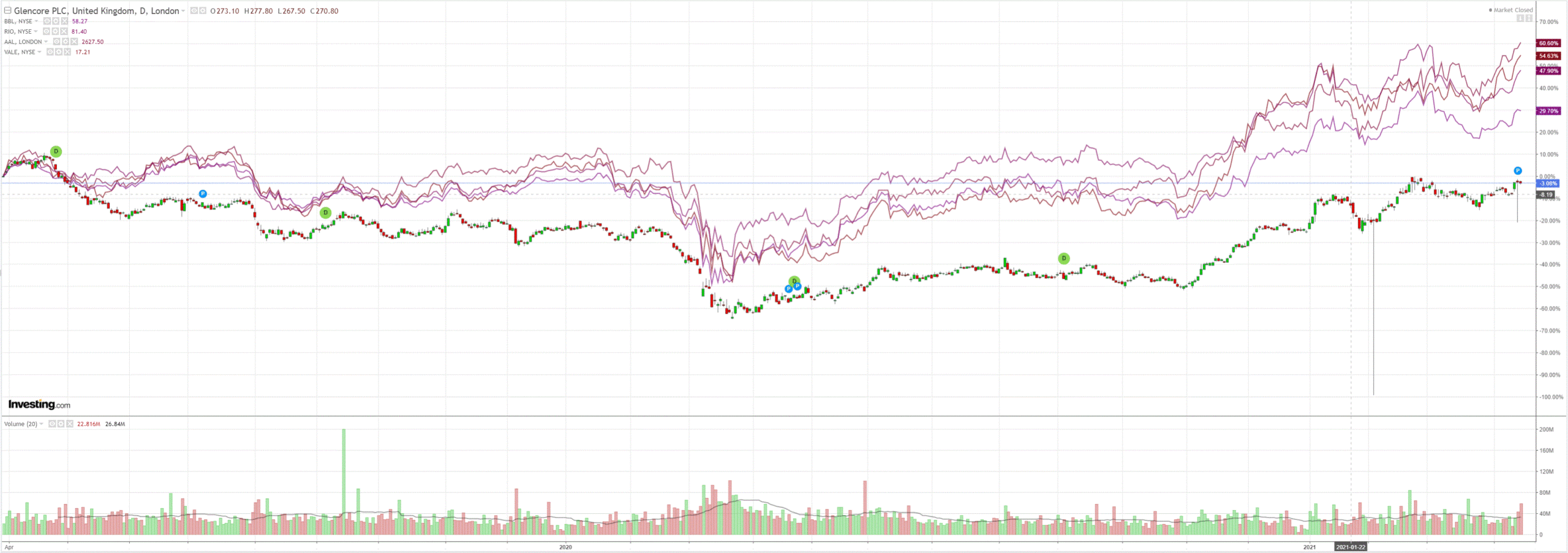
EM stocks are getting left behind as China tightens:
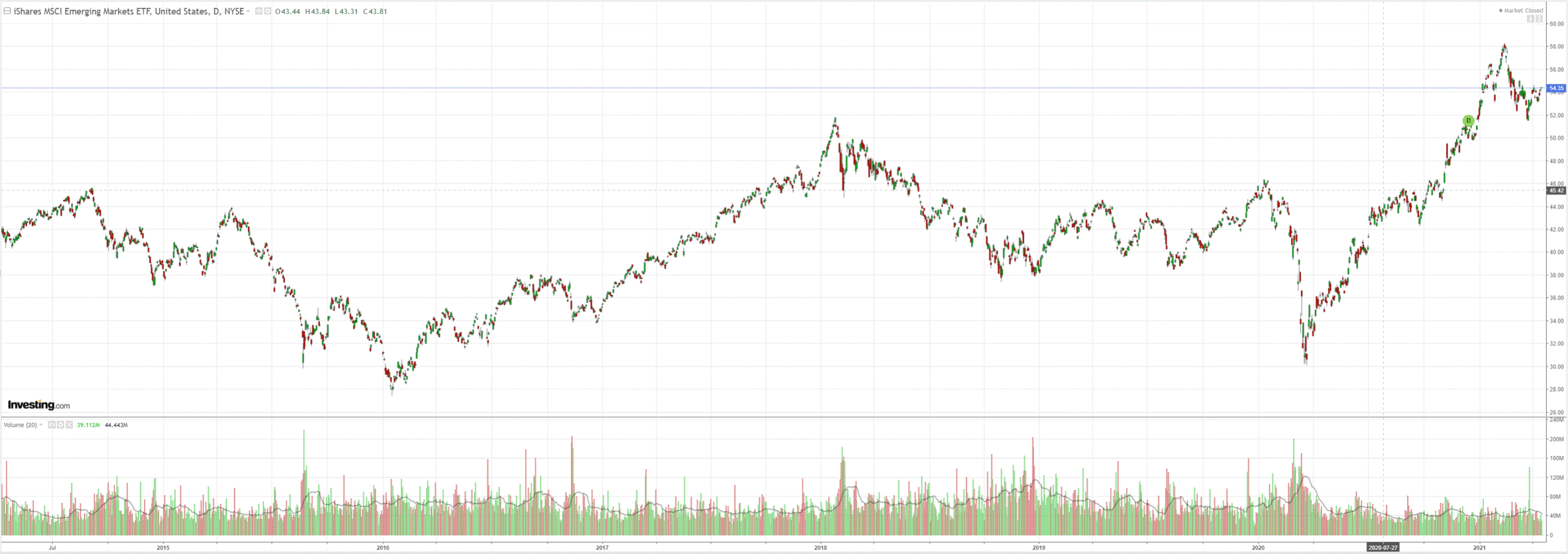
Junk is fine:
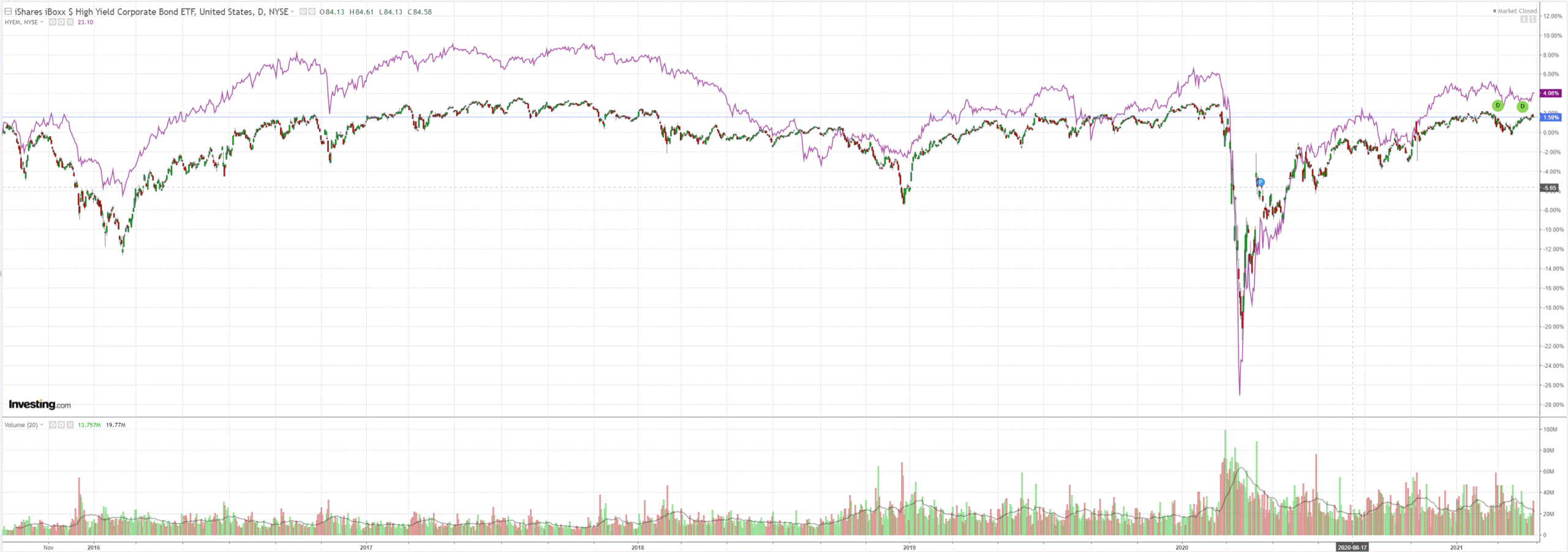
Despite falls in Chinese high yield:
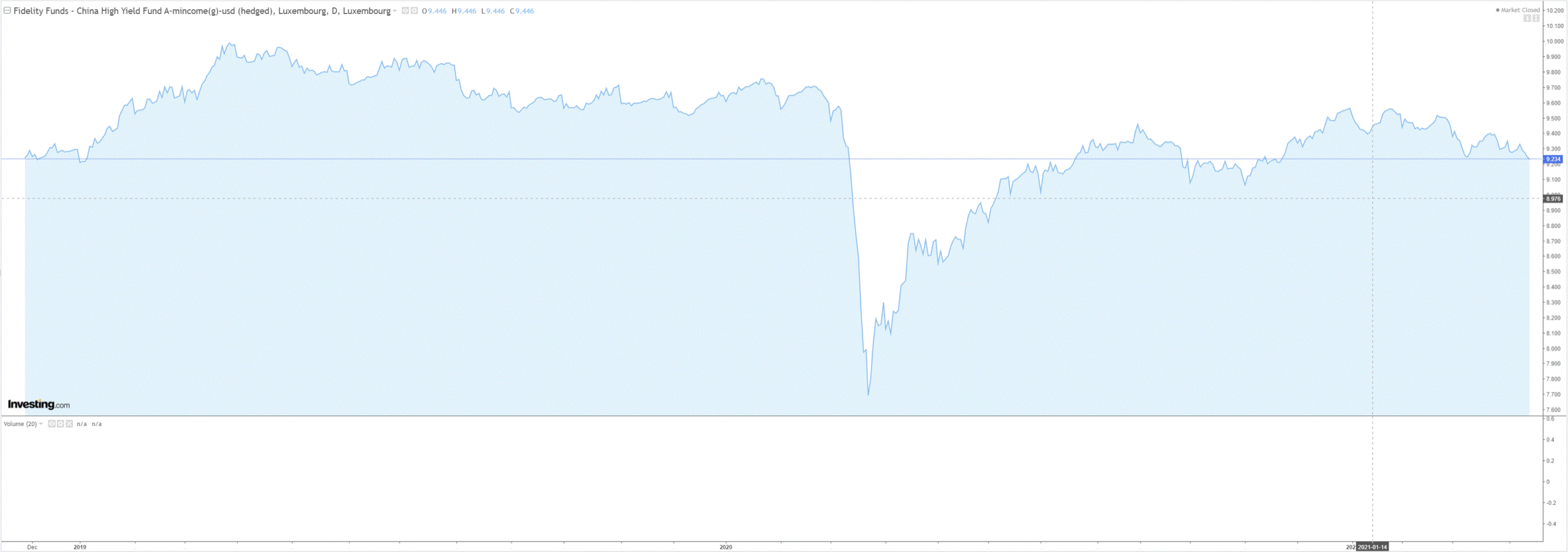
US yields rose:
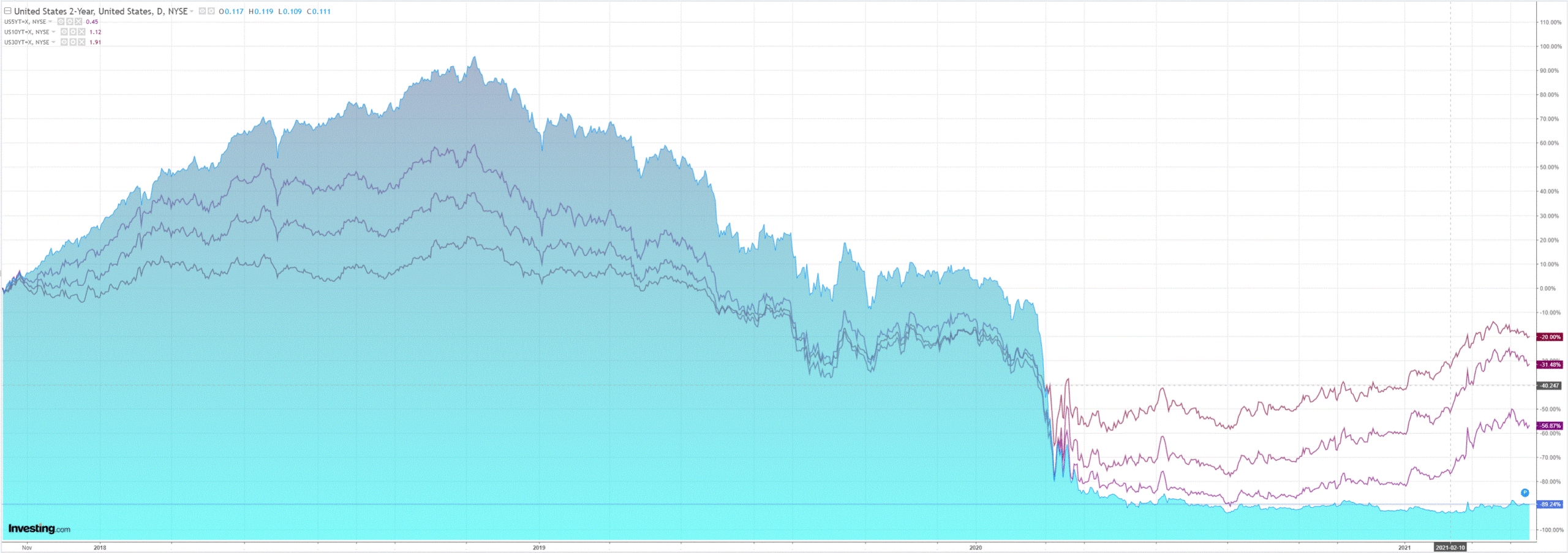
And so did value over growth stocks:
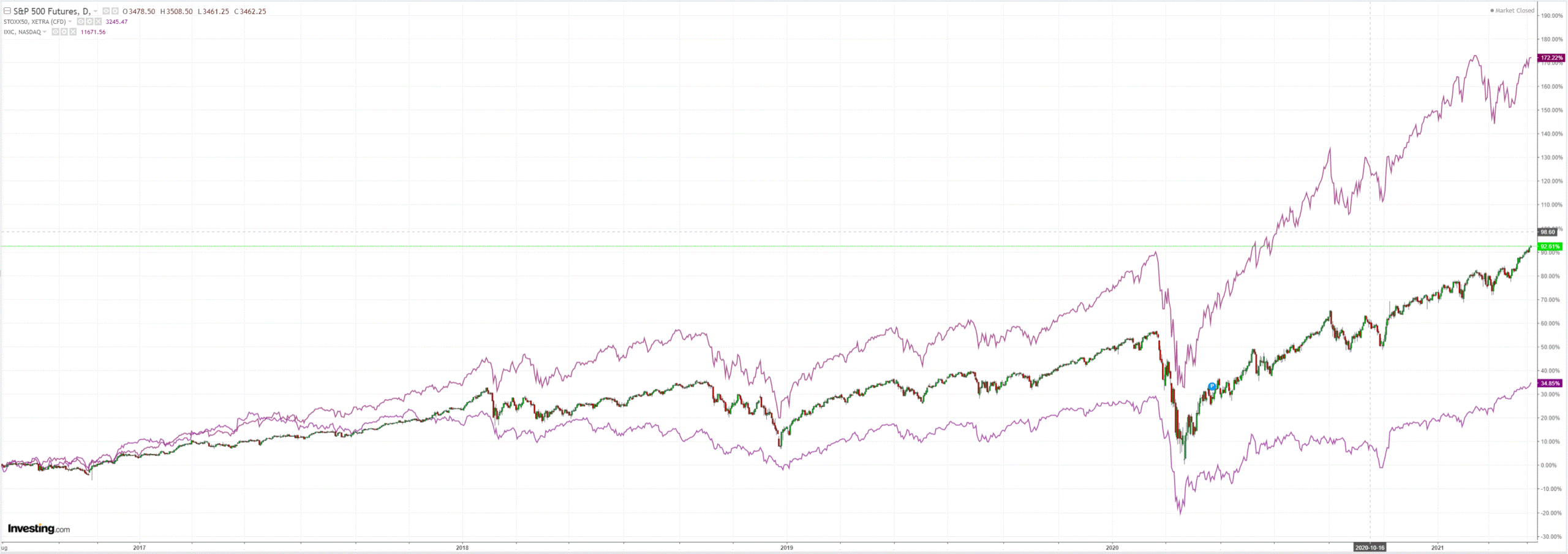
The key to everything is still US yields. When they back-up, DXY rises and risk assets, especially tech, EMs and commodities fall. So, where are we in the US yields corrective move? Nomura takes a look at market positioning:
Since February, bond market investors had gone too far into optimistic mode (shifting out of low-risk bonds into high-risk bonds), and from that angle the current step back from optimism looks like a spontaneous correction in sentiment. This has the effect of encouraging equity investors to chase the market up by lessening the worry of a further rise in yields while pushing down the VIX and other such measures of volatility. However, we also note that trend-following CTAs specifically appear to be steppingup their buying of safe assets.Gold futures and JPY are two key examples of such safeassets. With USD/JPY sitting below the line at 109.25 that we estimate represents the average break-even line for net buying since March, CTAs are accelerating their exits fromUSD/JPY long positions. With CTAs already in loss-cutting mode, the pressure generatedby CTAs buying back JPY as they exit their long USD positions is likely to weigh on USD/JPY.
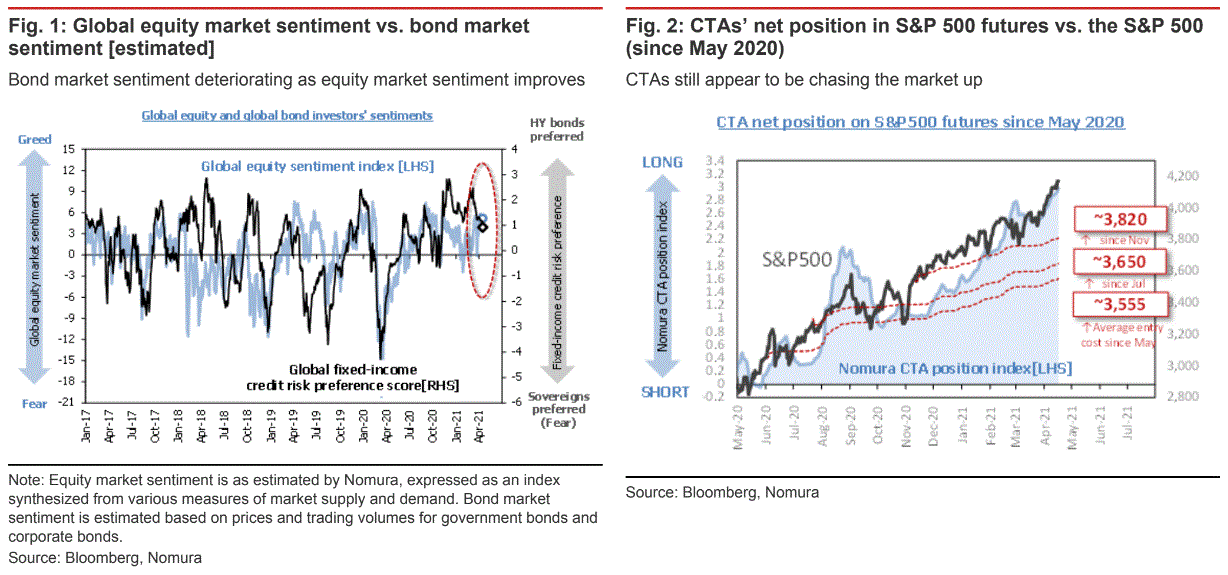
What we are seeing in the market for USTs (and UST futures) may be contextually similar to these purchases of safe assets by CTAs. We suspect that the decline in the 10yr USTyield has been driven in part by shifts in supply and demand among speculative investors. By our estimates, global macro hedge funds got the ball rolling by covering short UST positions and then swinging net long. As the downtrend in prices for 10yr UST futures (TY) came to a halt,trend-following investors responded by putting themselves to the task of unwinding short positions. Of course, speculators aren’t the only actors here. Longer-term investors (including Japanese investors) have also become buyers, with Japan’s Ministry of Finance revealing that Japanese investors were net buyers of foreign bonds by a margin of ¥1.7trn in the week of 4–10 April.
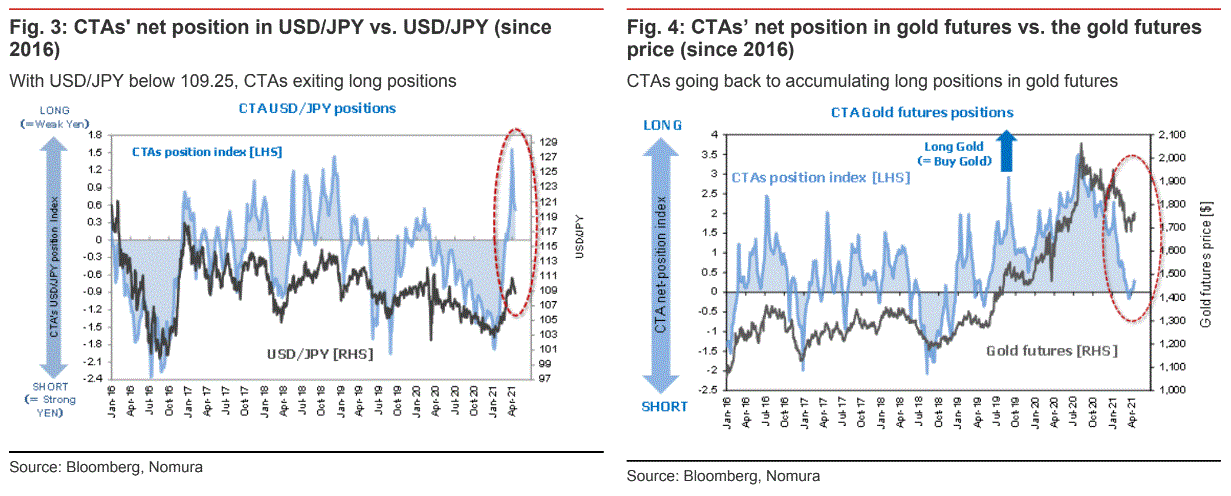
We estimate that the key trigger lines on the way down for 10yr UST yields lie at around 1.45% and 1.20%. According to the estimates output by our model, CTAs’outstanding holdings of short positions in 10yr UST futures (TY) probably break even at around 1.45% on average. If the 10yr UST yield were to plainly fall below this level, CTAswould be pressed into unwinding the remainder of their short futures positions. Should tha thappen, the 10yr UST yield could very well make its way down towards 1.20%. To put this another way, we would expect CTAs to swing to the net long side in the market for UST futures (TY) if the 10yr yield were to fall below 1.20%.
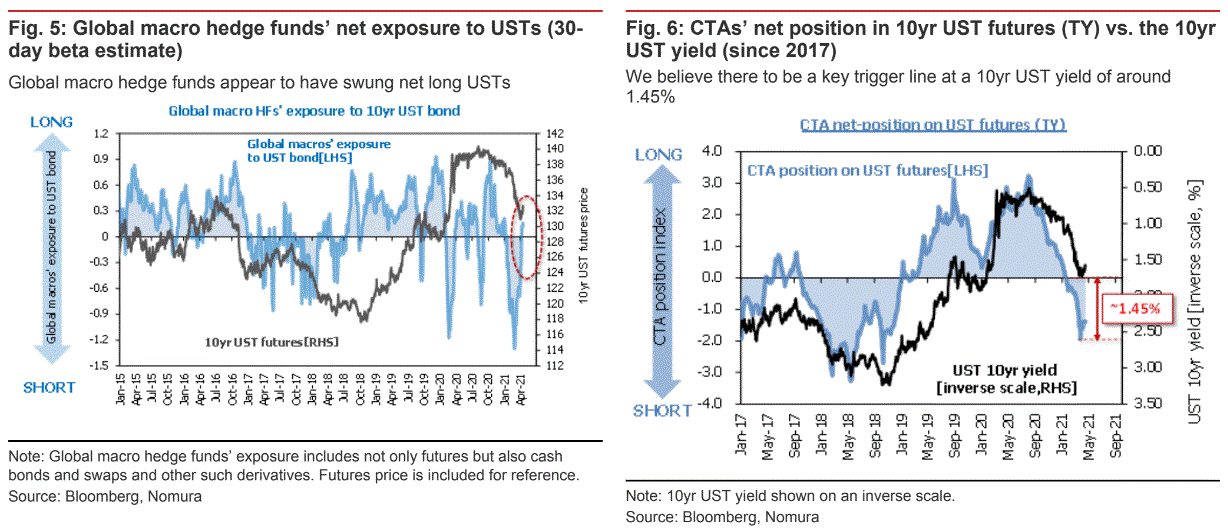
It is impossible for long-term investors to compete in this space of highly-strung hedgies and robots. We still see higher US inflation ahead for several more months on wild base effects, before it pulls back for a quarter or so, then begins to build up more legitimately again.
US core inflation should be comfortably above 2% for much of 2022 and the years beyond so we’ll use any short-term gyrations that push up the Australian dollar to position for what comes shortly after as the US leads the cycle and China lags it.
A lower AUD.

